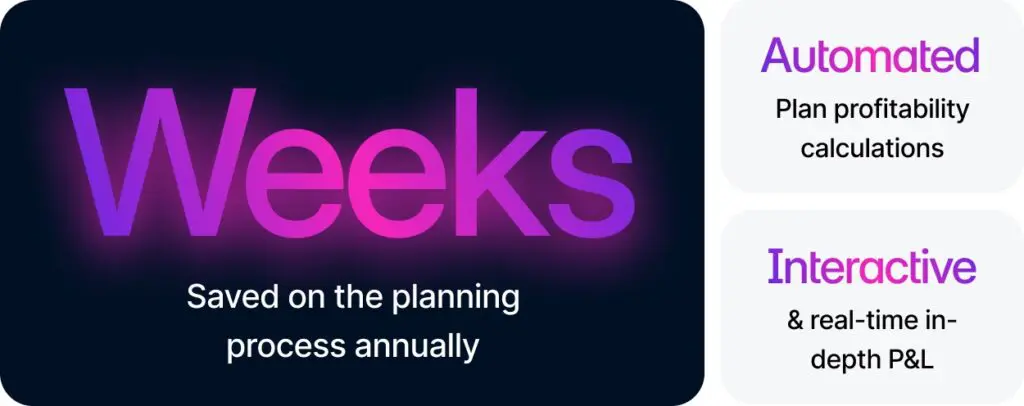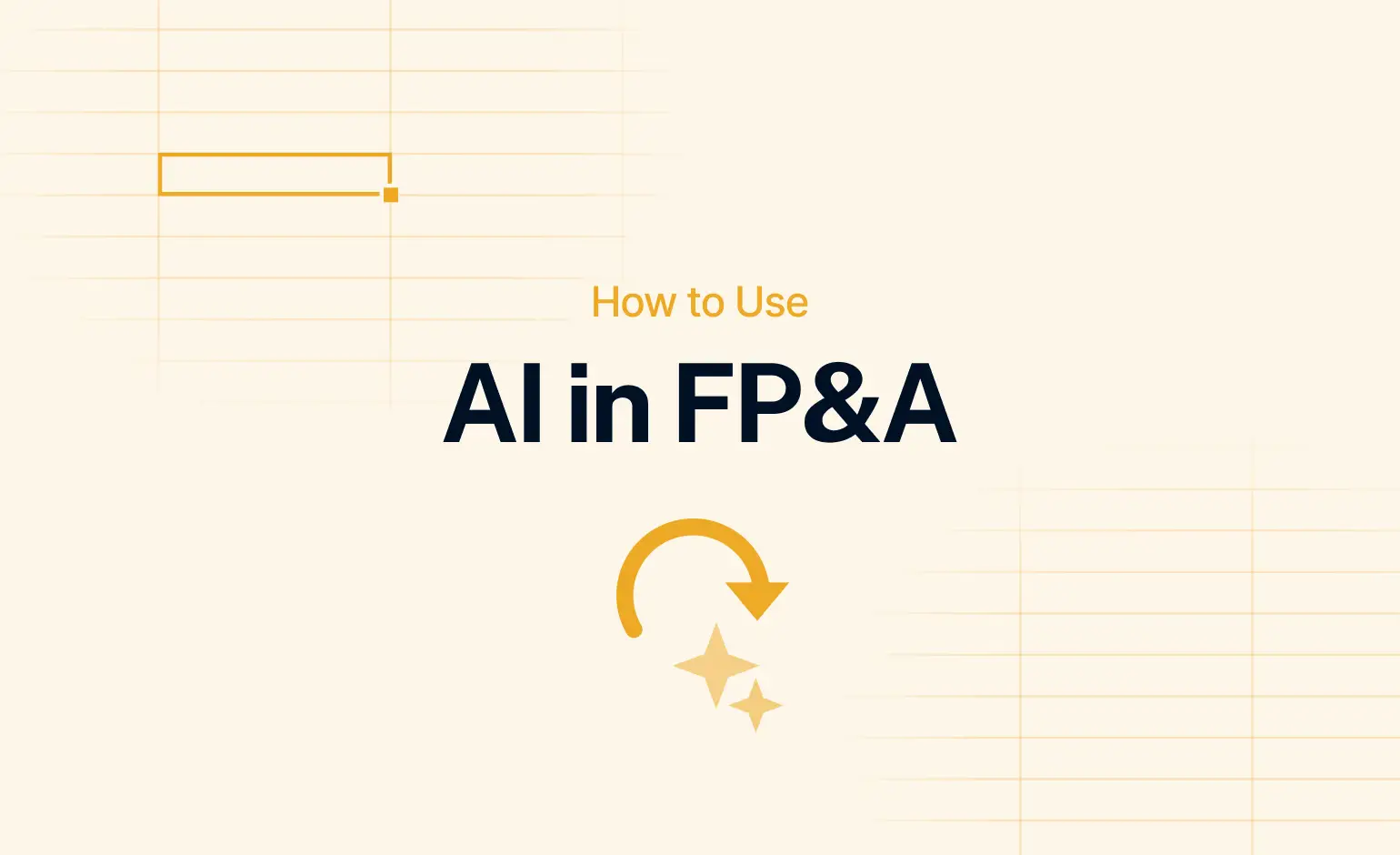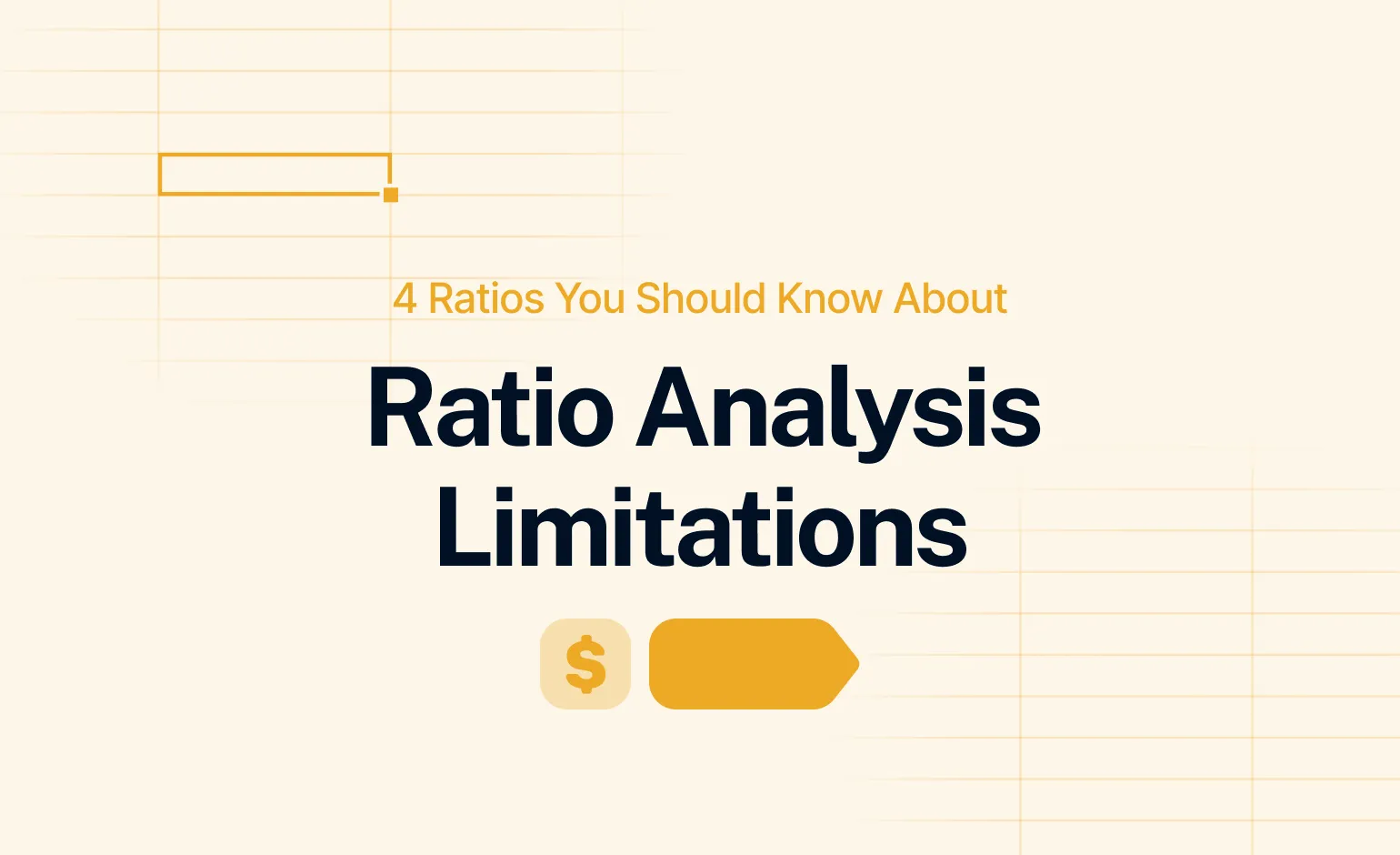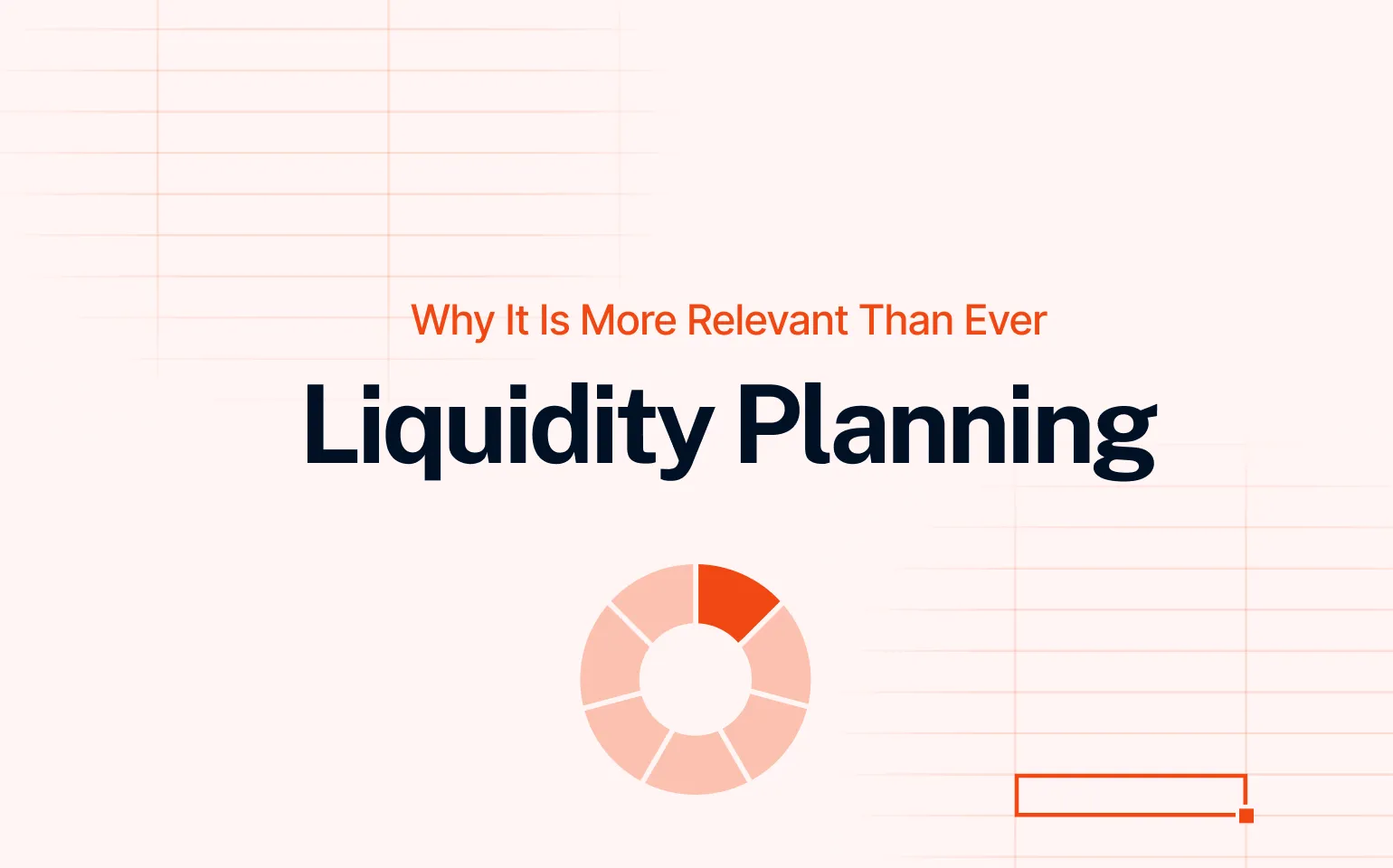Over the past few years, FP&A AI has moved from a buzzword and a speculative trend to a practical and useful item, an important tool for everyday use, and finance leaders are no exception. Today, it is no longer a question of whether AI will be relevant, but where, and how fast it can deliver measurable value.
In the context of FP&A, the promise of AI is clear: faster forecasts, earlier detection of deviations, better scenario modeling, and more time for actual decision-making. But that promise often gets buried under vague narratives and unrealistic expectations about what AI can deliver. Most AI discussions in finance either overstate what’s possible or oversimplify what’s required.
In this blog, we aim to do neither. We will focus on where AI is already creating value in FP&A, what common mistakes to avoid, and four concrete steps finance teams can take to start using it in ways that are realistic, efficient, and aligned with how planning actually works in complex businesses.
Read more: Finance Automation in 2025: Tools, Use Cases, and Real-World Strategy
Why AI is (Finally) Relevant to FP&A
AI is not new, but until recently, it hasn’t been particularly useful to finance teams. The technology was either too abstract, too hard to implement, or disconnected from how financial planning actually happens inside a company.
That’s changing, not because AI itself has suddenly improved, but because the conditions around it have.
As reported by EY and Gartner, over the last five years, three shifts have made AI a practical tool for FP&A teams:
Centralized, structured data
Finance teams have made significant progress in consolidating actuals, forecasts, and operational drivers into centralized planning platforms. This structured data is a prerequisite for any AI initiative. Without it, the model has nothing to learn from.
Cloud-native infrastructure
Cloud platforms now make it possible to run large-scale models in near real-time, without investing in custom infrastructure. Modern FP&A tools can integrate AI directly into workflows, no separate data science team required.
Mature, finance-specific AI models
We’ve moved past generic algorithms. Today’s solutions are trained on financial logic: seasonality, variance patterns, cost allocation, and scenario modeling. That makes AI outputs not just technically correct, but financially relevant.
The result is that AI is no longer a future investment but an immediate opportunity. Not for automation in the abstract, but for targeted improvements in areas like:
- Forecast accuracy
- Variance detection
- Driver-based planning
- Multi-scenario simulations
And all this is not about replacing human decision-making. It is about giving finance teams better inputs, faster, and with less manual work.
Where AI Is Already Working in FP&A
Finance teams are already using AI in FP&A; the use cases aren’t theoretical, and the value isn’t abstract. Forecasting, margin planning, sales planning, and scenario modeling are all being improved by AI tools that understand financial structure and work inside real planning environments.
According to the State of Finance 2026 report by Farseer, 75% of finance leaders see forecasting and planning as the biggest potential area for AI, followed by anomaly detection and variance analysis.
This shows that most teams view AI not as a future experiment, but as the next logical step in improving forecast accuracy and agility.
This is all happening now and not five years from now because the foundation is finally in place: centralized data, cloud-based tools, and AI models built to work with financial inputs. When the process is set up right, AI doesn’t add complexity; it removes it.
Here are five areas where that’s already happening.

Forecast Automation
One of the clearest wins is in forecast automation. AI models trained on actuals, seasonality, and operational drivers can generate rolling forecasts that update automatically. At HT, using an AI-integrated tool like Farseer helped reduce forecasting time by 30% and cut scenario consolidation by 80%. This shift allowed the finance team to spend less time on manual inputs and more time reviewing outcomes and aligning with operations.
Farseer is one of those environments, a modern planning platform designed for finance teams who need more flexibility and speed than spreadsheets can offer. Because it connects actuals, forecasts, and operational drivers in one place, it gives AI the structure it needs to be useful. That means faster forecasts, earlier risk detection, and less time spent on manual updates.
Reducing Planning Complexity
Another strong application is in simplifying fragmented workflows. Many teams still work across disconnected tools, wasting hours reconciling data and chasing inconsistencies. At EOS Matrix, switching to Farseer cut the number of planning steps by 50%. AI now helps validate inputs and flag issues early, simplifying coordination across finance and business teams.
Read more: AI Trends in FP&A Software: What Finance Teams Should Expect in 2026
Margin Visibility at the SKU and Brand Level
In product-heavy businesses, AI is improving visibility into profitability by region, product line, or brand. Violeta, a hygiene goods manufacturer with 30 brands and hundreds of SKUs, uses Farseer to automate sales planning and track performance across regions and categories. AI helps detect demand shifts, spot margin pressure early, and adjust forecasts faster, without the manual back-and-forth of spreadsheets.

Responsive Forecasting in Dynamic Markets
AI is also helping finance teams adapt more quickly to market volatility. According to EY’s 2025 Global FP&A Report, leading companies are using AI to update forecasts in real time based on signals like pricing changes, demand swings, or input cost volatility. This improves both the relevance and speed of decision-making, especially in industries exposed to external shocks.
Anomaly Detection and Early Risk Identification
AI is proving valuable in monitoring real-time profitability drivers. EY’s report also highlights how finance teams use AI to flag unexpected cost spikes, volume drops, or margin erosion during the period, not after the close. This enables faster corrective action and fewer surprises at month-end.
Common Pitfalls: Where AI Fails in FP&A
AI can be a powerful tool in FP&A, but it’s also easy to get it wrong. The biggest issues aren’t technical – they’re operational.
Here are the main reasons AI projects in finance fall short, and how to avoid them:
Poor data quality
AI doesn’t fix broken data. If actuals are inconsistent, if cost allocations vary by team, or if master data isn’t maintained, any output from AI will be unreliable. In FP&A, accuracy is non-negotiable. So unless the underlying data is structured and current, the model will do more harm than good.
Before introducing AI into planning, ensure your data sources are aligned, version-controlled, and centralized. Otherwise, the insights won’t be trusted, and rightly so.
Black-box outputs that no one trusts
It won’t be used if finance can’t explain the logic behind a recommendation. AI that suggests a volume adjustment or flags a margin risk without showing why won’t survive in an environment where accountability matters.
Transparency is critical. Any AI output must be auditable, explainable, and tied back to drivers the business understands.
Read more: Financial Reporting Automation – What It Actually Fixes (And Doesn’t)

Trying to automate strategic thinking
Not every planning process should be automated. Strategic plans, pricing decisions, or scenario selections often depend on market context, competitive insights, or board-level priorities. AI can support these areas with relevant inputs, but it shouldn’t be asked to own the final decision.
Use AI where logic is repeatable, the data is stable, and the process is frequent. Don’t expect it to replace human judgment in areas where the real value is qualitative.
Overpromising internal value too early
Rolling out AI too broadly or promising a full transformation creates internal resistance, especially if results aren’t immediate. Starting with a high-stakes initiative, like group-wide budget automation, can backfire if the model isn’t well-calibrated.
AI works when it’s built into how finance already operates, not as a separate system, but as a smarter layer on top of what’s already there.
AI Won't Replace Planners, But Planners Who Use AI Will Win
AI isn’t a silver bullet for FP&A but a practical tool for improving how finance teams plan, analyze, and respond to change. When applied to structured processes like forecasting, margin analysis, and scenario modeling, it delivers speed and visibility without increasing complexity.
But success depends on execution. Clean data, clear ownership, and smart use cases matter more than model sophistication.
The goal isn’t to automate everything. It’s to support better decisions, faster, especially when market conditions shift or the business is under pressure.
For finance teams already under strain from growing data volumes and shorter planning cycles, AI is no longer optional.It’s the next step in moving from manual control to proactive insight.
Start small. Focus on impact. And build trust with every output.
Read more: Will AI Replace Finance Jobs? Here’s What’s Actually Happening
Đurđica Polimac is a former marketer turned product manager, passionate about building impactful SaaS products and fostering connections through compelling content.



